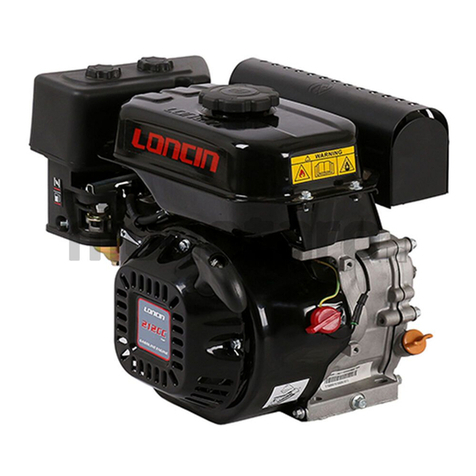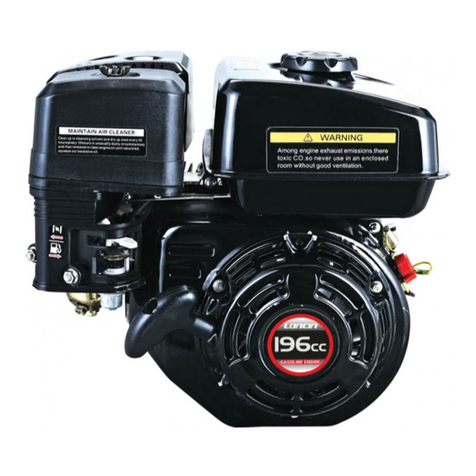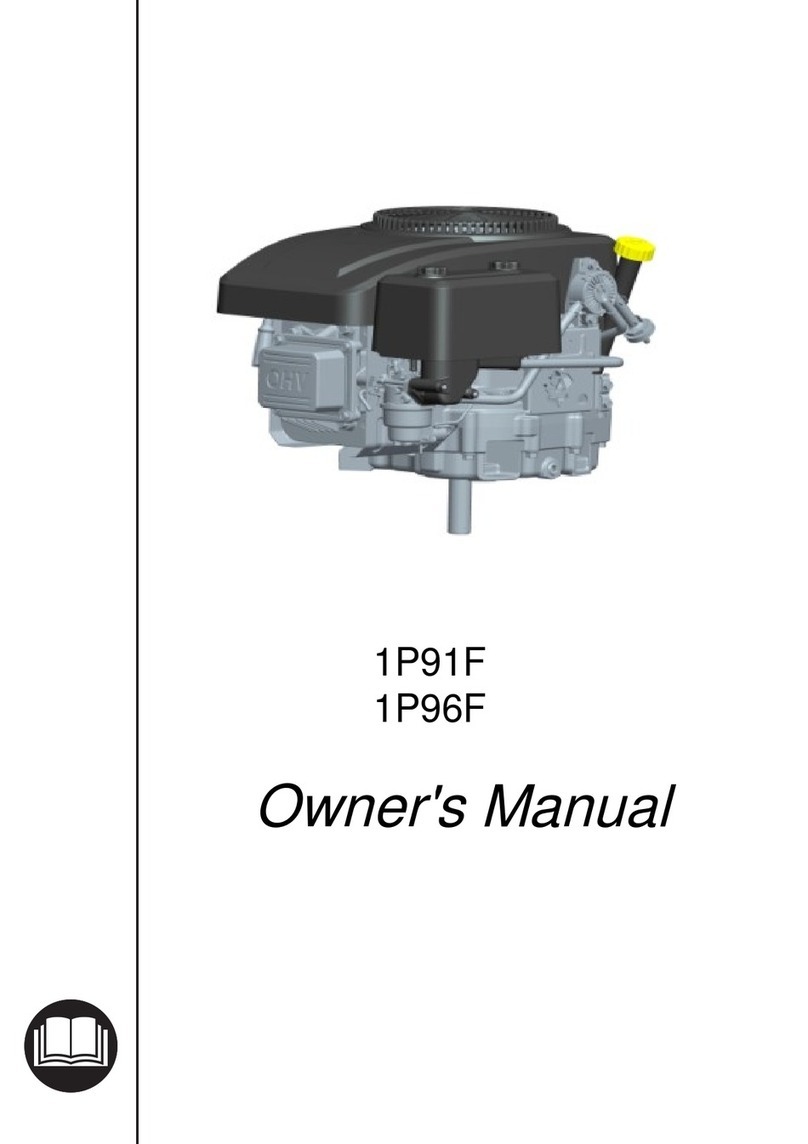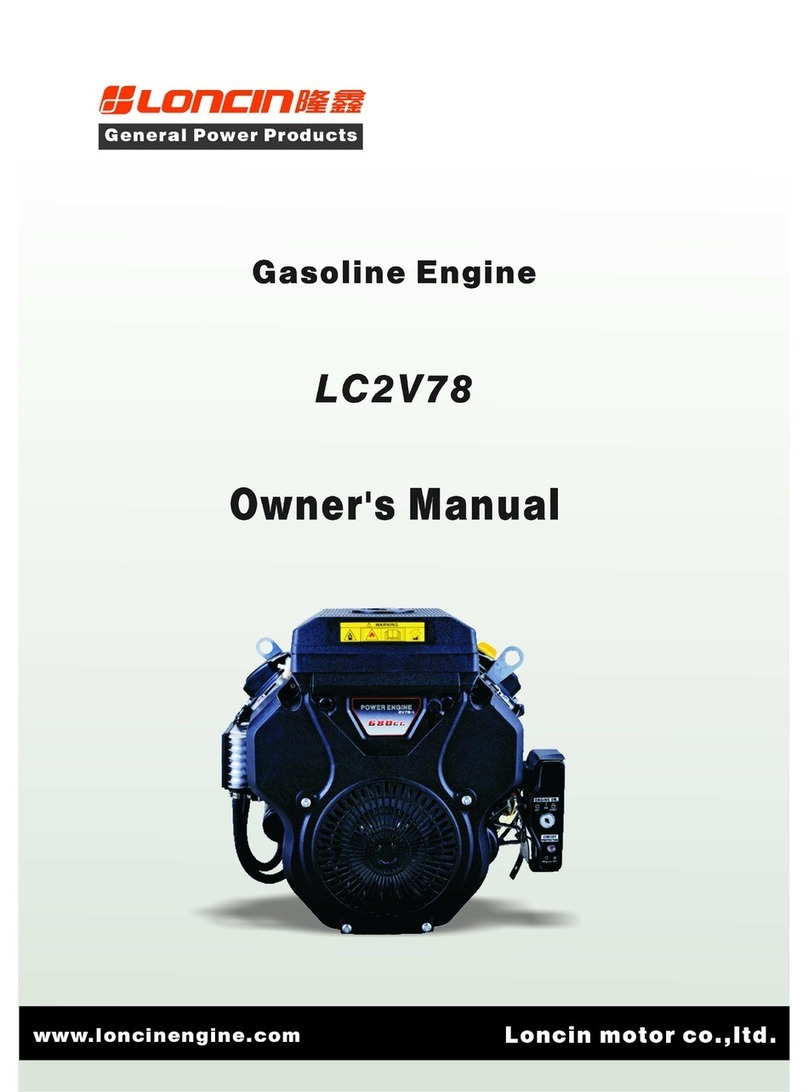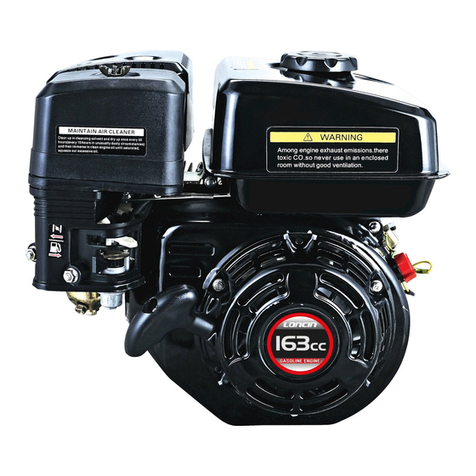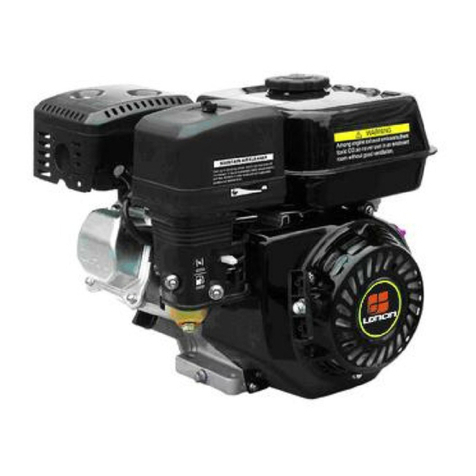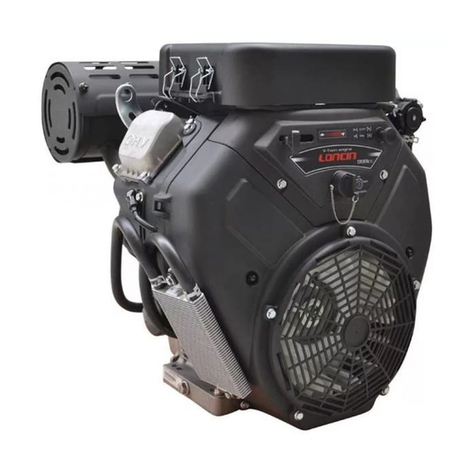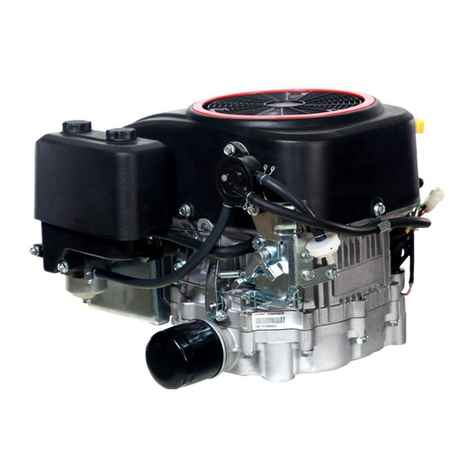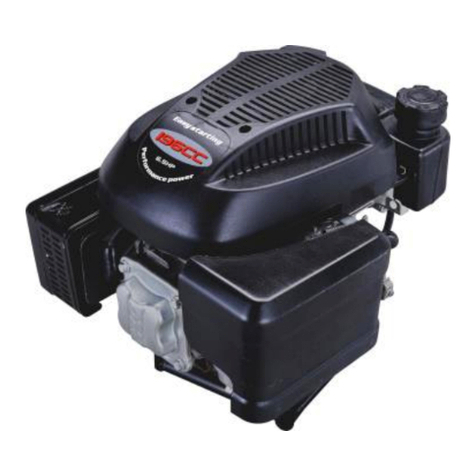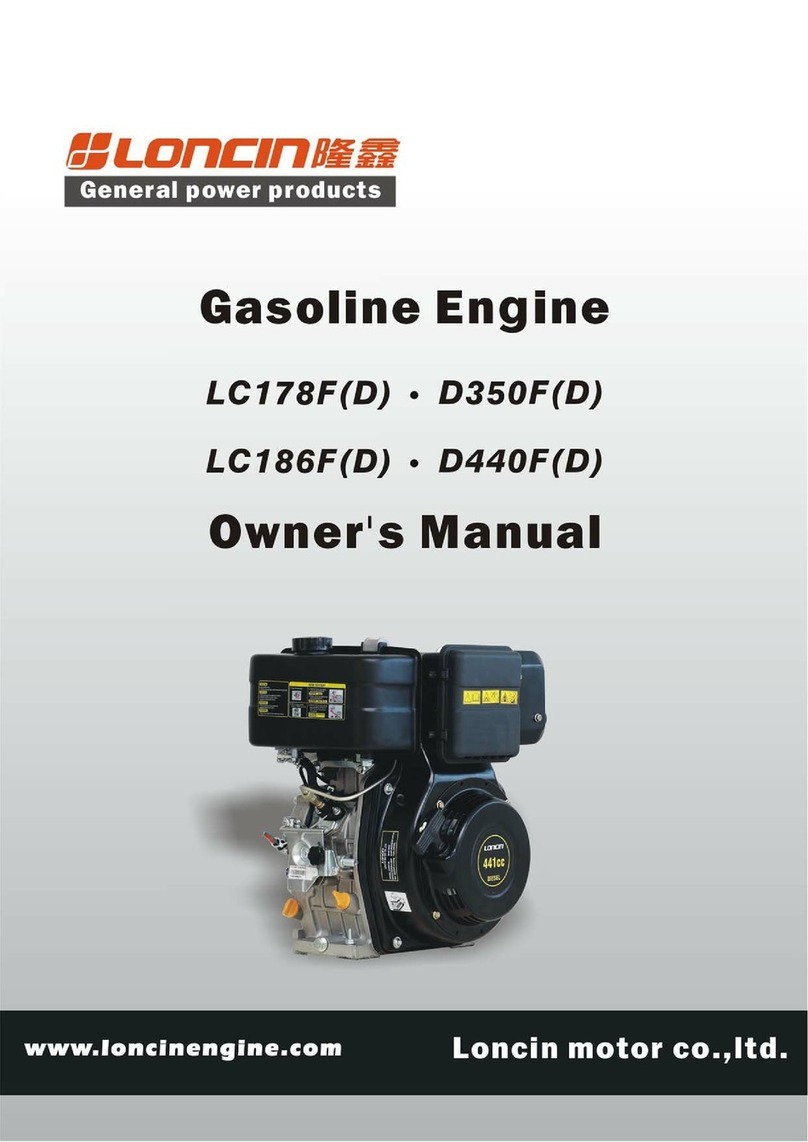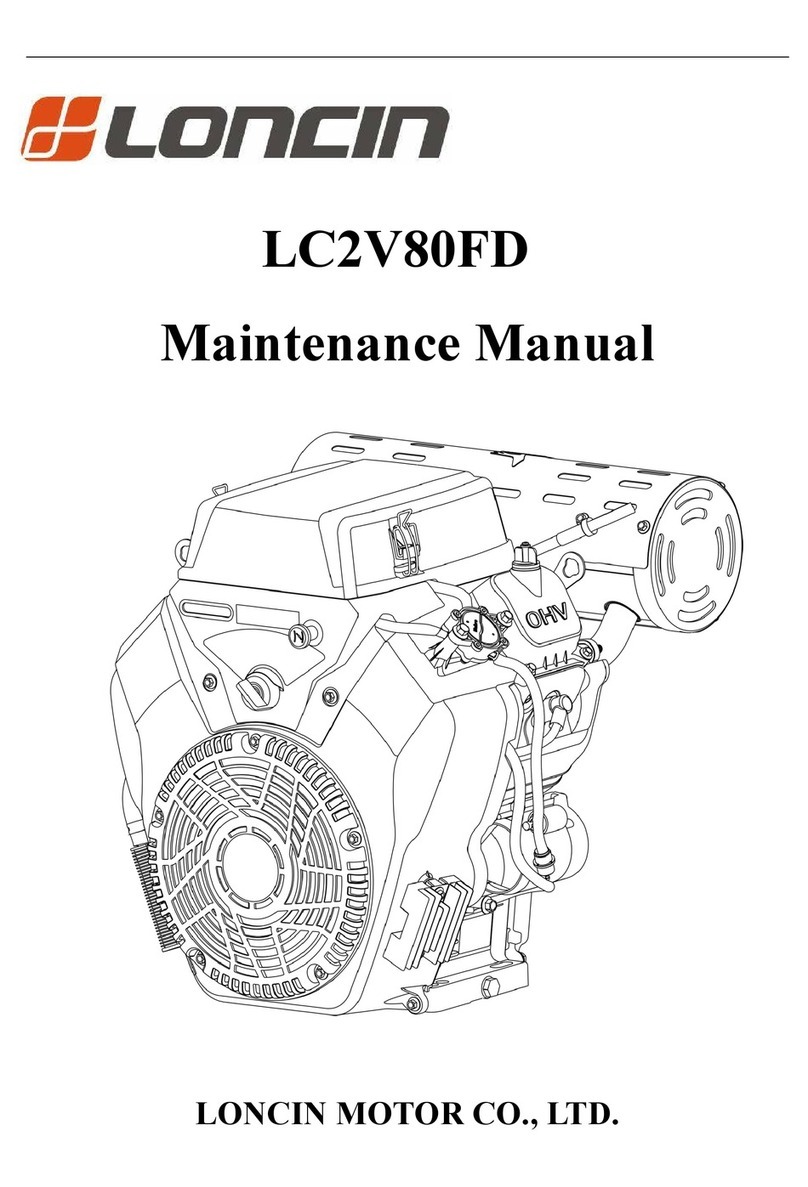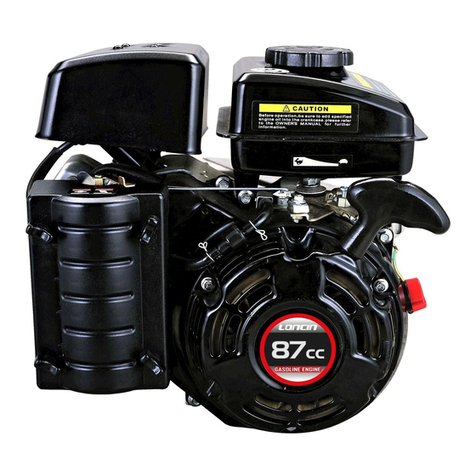ENGINE SAFETY
2
1. ENGINE SAFETY
IMPORTANT SAFETY INFORMATION
Most accidents with engines can be prevented if you follow all instructions in this manual
and on the engine. Some of the most common hazards are discussed below, along with the
best way to protect yourself and others.
Owner Responsibilities
zThe engines are designed to give safe and dependable service if operated according to
instructions. Read and understand this owner’s manual before operating the engine. Failure
to do so could result in personal injury or equipment damage.
zKnow how to stop the engine quickly, and understand the operation of all controls. Never
permit anyone to operate the engine without proper instructions.
zDo not allow children to operate the engine. Keep children and pets away from the area of
operation.
Gasoline and its vapors are extremely flammable and
explosive.
Fire or explosion can cause severe burns or death.
WHEN ADDING FUEL
zTurn engine OFF and let engine cool at least 2 minutes before removing gas cap.
zFill fuel tank outdoors or in well-ventilated area.
zDo not overfill fuel tank. Fill tank to approximately 1-1/2 inches below top of neck to
allow for fuel expansion.
zKeep gasoline away from sparks, open flames, pilot lights, heat, and other ignition
sources.
zCheck fuel lines, tank, cap, and fittings frequently for cracks or leaks. Replace if
necessary.
WHEN STARTING ENGINE
zMake sure spark plug, muffler, fuel cap and air cleaner are in place.
zDo not crank engine with spark plug removed.
zIf fuel spills, wait until it evaporates before starting engine.
zIf engine floods, set choke to OPEN/RUN position, place throttle in FAST and crank
until engine starts.
WHEN OPERATING EQUIPMENT
zDo not tip engine or equipment at angle which causes gasoline to spill.
zDo not choke carburetor to stop engine.
WHEN TRANSPORTING EQUIPMENT
zTransport with fuel tank EMPTY or with fuel shut-off valve OFF
WHEN STORING GASOLINE OR EQUIPMENT WITH FUEL IN TANK
zStore away from furnaces, stoves, water heaters or other appliances that have pilot
light or other ignition source because they can ignite gasoline vapors.
WARNING


